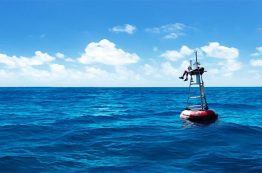To-Nhu “Leslie” Nguyen, student in the School of Marine and Environmental Affairs (SMEA), has been selected by the University Corporation for Atmospheric Research (UCAR) for the Next Generation Fellowship, an opportunity that gives financial and academic support to Earth system science students from historically underrepresented groups. Nguyen was selected as the program’s public policy fellow. “I am pleased to welcome this year’s cohort of fellows,” said UCAR President Antonio Busalacchi.
Read more »How ‘ice needles’ weave patterns of stones in frozen landscapes
Nature is full of repeating patterns that are part of the beauty of our world. An international team, including a researcher from the University of Washington, used modern tools to explain repeating patterns of stones that form in cold landscapes. The new study, published Oct. 5 in the Proceedings of the National Academy of Sciences, uses experimental tools to show how needles of ice growing randomly on frozen ground can gradually move rocks into regular, repeating patterns.
Read more at UW News »UW oceanographer Parker MacCready elected fellow of the AGU
University of Washington oceanographer Parker MacCready is one of 59 new fellows elected this year by the American Geophysical Union. The scientific organization recognizes only 1 in 1,000 of its members as global leaders and experts who have propelled our understanding of the geosciences. MacCready, a professor in the UW School of Oceanography, was recognized for his work to advance fundamental understanding of ocean coasts and estuaries, or marine environments where freshwater and saltwater mix.
Read more at UW News »Bigleaf maple decline tied to hotter, drier summers in Washington
As its name suggests, the bigleaf maple tree’s massive leaves are perhaps its most distinctive quality. A native to the Pacific Northwest’s wet westside forests, these towering trees can grow leaves up to 1.5 feet across — the largest of any maple. But since 2011, scientists, concerned hikers and residents have observed more stressed and dying bigleaf maples across urban and suburban neighborhoods as well as in forested areas.
Read more at UW News »DEI at the School of Oceanography
“Our community acknowledges that we must work to address the culture of white supremacy in our department and in the geosciences as a whole. We must ensure that racial and gender microaggressions, exclusion, bullying, and discriminatory remarks are addressed as pervasive, systemic issues.” The School of Oceanography’s Diversity, Equity and Inclusion Statement of Acknowledgement recognizes the lack of racial diversity in the geosciences, citing a study that found little to no progress on that front over the past four decades.
Read more »





